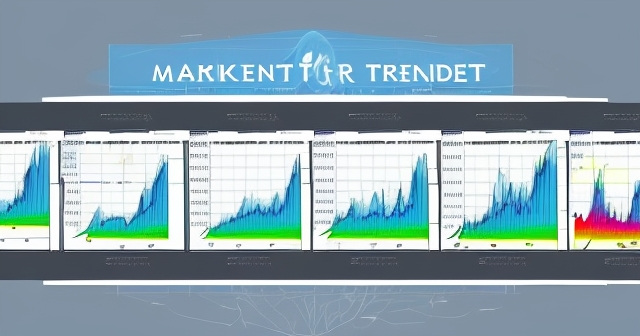Mastering Your Mind: How to Avoid Recency Bias and Invest for Long-Term Success
Welcome, fellow investor. We’re embarking on a journey to understand one of the most powerful, yet often invisible, forces influencing your investment decisions: recency bias. Think of it as a cognitive filter that makes the most recent events appear disproportionately important compared to everything that came before. In the fast-paced world of financial markets, this bias can be particularly insidious, leading you down paths that deviate from your long-term goals.
- Recency bias can cause portfolio volatility.
- It leads to impulsive trading decisions based on recent market movements.
- Understanding it is crucial for rational investing.
Have you ever felt an urge to radically change your portfolio after watching a single day of market drops? Or perhaps felt compelled to pour money into a sector that has seen meteoric rises in just the past few months? If so, you’ve likely experienced the tug of recency bias. But don’t worry; you’re not alone. Understanding this bias is the crucial first step in neutralizing its effects and building a more resilient, rational investment approach.
What Exactly is Recency Bias? Unpacking the Psychological Roots
At its core, recency bias is a cognitive bias that leads us to overweight recent information or experiences when making judgments or predictions. It’s closely related to the availability heuristic, where we rely on information that is easily recalled or ‘available’ in our memory – and recent events are naturally the most available.
Why are our brains wired this way? From an evolutionary perspective, it makes sense. Prioritizing the most recent information – like where the freshest food source was found or where a predator was last spotted – could be critical for immediate survival. The danger right now, the opportunity just presented, these were often the most pressing concerns. Our brains developed a shortcut to prioritize what’s ‘new’.
However, in the complex, interconnected financial world, this evolutionary shortcut becomes a potential liability. Unlike the immediate needs of survival, successful investing hinges on understanding long-term trends, historical cycles, and delayed gratification. Focusing only on the latest market headline or the past week’s performance is like trying to predict the global climate based solely on yesterday’s weather in your backyard. It’s simply not enough information, and often, it’s misleading information when taken out of context.
Recency bias causes us to perceive recent patterns as more significant or predictive than they actually are. A stock that’s gone up 20% in a month suddenly feels like a guaranteed winner. A market that’s dropped 10% feels like it’s heading for zero. These are emotional reactions driven by disproportionate focus on the recent past, not rational conclusions based on a complete historical picture.

Why Recency Bias is a Major Hurdle for Investors
The disconnect between our brain’s ancient wiring and the modern financial landscape makes recency bias particularly damaging to investment performance. Long-term investing is fundamentally about accumulating wealth gradually over time, leveraging the power of compounding, and navigating inevitable periods of volatility with a steady hand. Recency bias actively works against all of these principles.
- Fear-driven selling during downturns.
- Chasing trends during upturns.
- Frequent trading leads to higher costs and inefficiencies.
When you’re overly focused on the latest market movements, you’re prone to making decisions based on fear (during downturns) or greed (during upturns). These are emotional responses, not strategic ones. A sudden market dip, fueled by recent negative news, can trigger panic selling driven by the fear that ‘things will only get worse’ – a classic recency bias reaction. Conversely, watching an asset skyrocket might lead you to chase the trend, buying high out of the fear of missing out (FOMO) or the belief that ‘it will keep going up’ – again, driven by recent performance.
This reactive behavior, constantly adjusting your strategy based on the latest noise, is the antithesis of successful long-term investing. It leads to frequent trading, higher transaction costs, potential tax inefficiencies, and most importantly, can cause you to miss out on the market’s best days, which often occur unexpectedly right after sharp declines.
Think of it like this: if you’re driving across the country, you don’t frantically change your route and destination every time you hit a patch of traffic or see a sign for a town you hadn’t planned to visit. You stick to your map and your final goal. Recency bias is the impulse to ditch the map because the last mile was slow.
Real-World Financial Examples of Recency Bias at Play
Recency bias isn’t just an abstract psychological concept; it manifests in very tangible ways in investor behavior and market trends. We see examples of it playing out constantly.
Remember the intense focus on “FAANG” stocks (Meta/Facebook, Apple, Amazon, Netflix, Google/Alphabet) for years? Their incredible recent performance led many investors to believe they were invincible and would continue their ascent indefinitely, causing them to overweight these stocks dramatically, often neglecting diversification. When these stocks eventually faced challenges, those who had chased the recent trend suffered significant drawdowns.
More recently, consider the energy sector. Following geopolitical events and supply chain issues in early 2022, energy prices and the stocks of energy companies surged. Investors exhibiting recency bias might have piled into energy stocks based on this recent performance, assuming it would continue indefinitely, potentially ignoring the cyclical nature of commodities and the long-term shift towards renewable energy.

Market downturns are fertile ground for recency bias. When the market drops sharply, as it did in early 2020 or in periods of 2022, the recent experience of losses feels overwhelming and predictive. This can lead investors to sell out of fear, locking in losses and missing the subsequent recovery, simply because the recent memory of the decline dominates their decision-making process. Data consistently shows that investors who panic and sell during downturns severely underperform those who stay invested.
| Event | Impact of Recency Bias |
|---|---|
| FAANG Stock Surge | Overweighting these stocks due to recent performance. |
| Energy Sector Rally | Investors neglecting long-term implications of energy investment. |
| Market Drop 2020 | Panic selling leading to locking in losses. |
Even reacting intensely to recent economic data, like the latest inflation rate or jobs report, can be a form of recency bias. While important, a single data point is just one piece of a much larger, long-term economic puzzle. Overreacting to the most recent number without historical context or understanding broader trends can lead to poor investment choices.
The Hidden Costs: Quantifying the Damage from Recency Bias
The impact of recency bias on your portfolio isn’t just theoretical; it has a measurable cost. Studies in behavioral finance have repeatedly shown that investors who try to time the market, often driven by reactions to recent events, significantly underperform those who adopt a buy-and-hold strategy.
-
You incur transaction costs (brokerage fees, spreads), which eat into your returns.
-
You trigger potential tax events (capital gains) more frequently than necessary.
-
You increase the risk of mis-timing the market. You might sell just before a recovery or buy just before a dip, precisely because you’re reacting to recent, potentially misleading, information.
-
You often miss the market’s best days. Financial history illustrates that a large percentage of the market’s total returns over decades are concentrated in a very small number of trading days, which are notoriously difficult to predict and often follow periods of decline.

Consider this common scenario: the market drops (recent negative event triggers fear), you sell to stop the bleeding (locking in losses). The market then recovers (driven by factors unrelated to your recent fear), and you miss the bounce. Then, seeing the market rise (recent positive event triggers greed), you buy back in, potentially at a higher price than where you sold. This cycle, driven by recency bias, actively destroys wealth compared to simply holding through the volatility.
Recency bias can also lead you to concentrate your portfolio excessively in assets that have performed well recently, increasing your overall risk. Diversification, which is key to managing risk over the long term, is often neglected when the allure of a recently successful sector or asset class becomes too strong.
Building a Foundation: Proactive Strategies to Combat Recency Bias
The most effective way to combat recency bias is to build a robust framework for your investment decisions *before* volatility or exciting trends hit. This involves planning, education, and setting clear rules.
- Develop a Long-Term Investment Plan: This is perhaps the single most important step. Define your financial goals (retirement, down payment, etc.), your time horizon, and your comfortable level of risk. Based on these factors, create an asset allocation strategy (how much to put in stocks, bonds, cash, etc.) that aligns with your long-term objectives. This plan serves as your roadmap. When recent events try to pull you off course, you can refer back to your plan and ask: Does this event fundamentally change my long-term goals or my ability to achieve them with my current strategy? For most short-term fluctuations, the answer is no.
- Educate Yourself on Financial History: Understanding market history is a powerful antidote to recency bias. Learn about past market cycles, including major crashes and prolonged downturns (like 2000-2002, 2008-2009, or even shorter, sharp drops like March 2020). Seeing how markets have behaved over decades – experiencing booms, busts, and eventual recoveries – provides crucial context. It teaches you that volatility and downturns are normal, even inevitable parts of the investing journey, not unique catastrophes that demand immediate, panicked reactions based on the latest news.
- Define Your Strategy for Volatility *Beforehand*: Part of your plan should include how you will react to different market scenarios. Will you rebalance? Will you hold steady? Will you invest more if prices drop significantly? Having a pre-defined action plan removes the need to make emotional decisions fueled by recency bias when faced with actual market stress.
- Compartmentalize Your Portfolio: If you need access to some funds in the near term (e.g., emergency fund, planned large purchase), keep those funds in safe, stable assets like cash or short-term bonds, separate from your long-term growth investments (equities, etc.). This prevents recent volatility in your growth portfolio from triggering panic related to your short-term financial needs.
By establishing these foundations, you create anchors that tie your investment decisions to your well-considered long-term vision rather than the fleeting impressions of recent market noise.
Navigating the Storm: Staying Disciplined During Volatility
Once you have your proactive strategies in place, the real test comes when markets become volatile. This is when recency bias is most powerful, urging you to act impulsively based on recent losses or gains. Navigating these periods requires discipline and a conscious effort to counteract the bias.
- Stick to Your Plan: This is paramount. Your long-term plan was built with rational analysis, considering historical volatility and market cycles. Trust the process you established when you were thinking clearly, not emotionally driven by recent events. Remind yourself of your goals and your time horizon.
- Resist the Urge to Trade Impulsively: When markets are dropping, recency bias screams, “Sell now before it gets worse!” When they’re surging, it whispers, “Buy everything related to this hot trend!” Recognize these urges as the bias speaking. Before making *any* trade not dictated by your pre-set plan (like a scheduled rebalance), introduce a cooling-off period. Wait 24 or 48 hours. Often, the emotional intensity subsides, and you can view the situation more rationally.
- Filter Out the Noise: The financial media thrives on recent news and dramatic headlines. During volatile times, this noise is amplified, constantly feeding recency bias. Reduce unnecessary exposure to constant market updates, especially intraday movements. Focus on high-level trends and analysis that aligns with your long-term perspective, not minute-by-minute market swings driven by the latest snippet of news.
- Focus on the Bigger Picture: Instead of fixating on how much your portfolio dropped *today* or *this week*, look at its performance over months, years, or even since you started investing. Compare current performance to long-term averages or historical market returns over similar periods. Visualizing your portfolio’s journey over a long timeline helps put recent dips or surges into perspective.
This conscious effort to pause, reflect, and adhere to your established plan is crucial during periods where recent events feel overwhelming. It’s about making decisions based on evidence and strategy, not emotion and recent memory.
The Power of Structure: Rebalancing and Diversification
Beyond having a plan, implementing systematic investment strategies like regular rebalancing and broad diversification are powerful tools that inherently combat recency bias.
Diversification involves spreading your investments across different asset classes (stocks, bonds, real estate, commodities), geographies, industries, and investment styles. Why does this help with recency bias? Because it prevents you from becoming overly reliant on, and thus overly emotionally attached to, the recent performance of any single investment. When one sector or asset class performs poorly recently, another might be doing well, smoothing out the overall ride of your portfolio. This reduces the likelihood that the recent negative performance of one holding will trigger a panic reaction across your entire portfolio. It encourages a focus on the health of the whole, rather than fixating on the individual parts based on their latest results.
Rebalancing is the process of adjusting your portfolio periodically (e.g., every six or twelve months) back to your target asset allocation. For example, if your target is 60% stocks and 40% bonds, and after a period of strong stock performance, stocks now make up 70% of your portfolio, rebalancing means selling some of the stocks (which have done well recently) and buying more bonds (which have lagged). This is the *exact opposite* of what recency bias would tell you to do (which is to buy more of what’s gone up recently).
By forcing you to sell assets that have recently outperformed and buy assets that have recently underperformed, rebalancing is a disciplined, systematic process that explicitly counters the impulse driven by recency bias. It helps you maintain your desired risk level and captures returns by selling high and buying low in a structured, unemotional way. It’s a powerful behavioral guardrail.

If you are exploring different asset classes like foreign exchange or various CFDs, having a platform that supports a wide range of instruments can be beneficial for diversification. If you’re considering getting started with FX trading or exploring more CFD products, then Moneta Markets is a platform worth considering. It’s from Australia and offers over 1000 financial instruments, making it suitable for both beginners and professional traders.
Leveraging External Expertise: The Value of a Financial Advisor
For many investors, managing the emotional and psychological challenges of investing, including recency bias, is the hardest part. This is where a qualified financial advisor can provide significant value, often acting as a behavioral coach.
An advisor brings an objective, third-party perspective to your investment decisions. They are not subject to the same emotional triggers from your portfolio’s recent performance as you are. When markets are volatile and recency bias is telling you to panic or chase, an advisor can provide calm, rational guidance, reminding you of your long-term plan and the historical context that counters the bias.
They can help you identify when your decisions might be influenced by biases like recency bias or availability bias. By discussing your reactions to market events, an advisor can gently challenge emotional impulses and steer you back towards your strategic objectives. They can also help you set up the systematic processes, like rebalancing, that make disciplined investing easier to follow.
Furthermore, a good advisor will help you build the proactive foundation discussed earlier – defining goals, creating a comprehensive plan, and setting expectations about volatility. This structure, combined with their objective oversight during stressful periods, can be invaluable in preventing recency bias from derailing your financial future.
The Role of Technology: Automated Tools in Combating Bias
In addition to human guidance, technology offers tools that can help mitigate recency bias, primarily by removing the emotional element from the decision-making process.
Automated Investment Platforms (Robo-advisors) are a prime example. These platforms build and manage diversified portfolios for you based on algorithms and your specified goals and risk tolerance. Once the initial parameters are set, the platform automatically handles tasks like asset allocation and rebalancing without human emotional intervention. This means decisions are made based on pre-defined rules and market data, not on recent headlines or short-term performance fluctuations.
By automating the execution of your investment strategy, robo-advisors prevent you from making impulsive changes driven by recency bias during volatile periods. They stick to the plan, rebalancing on schedule regardless of how individual assets have performed recently. This enforces discipline and consistency, which are key to long-term success.
While a robo-advisor might not offer the personalized behavioral coaching of a human advisor, they provide a systematic, bias-free execution engine for your investment strategy. This can be particularly helpful for new investors or those who know they are prone to emotional reactions to market movements.
In choosing a trading platform to implement a structured strategy, especially for diverse instruments, technological stability and flexibility are key. When selecting a trading platform, Moneta Markets‘ flexibility and technological advantages are worth mentioning. It supports major platforms like MT4, MT5, Pro Trader, combining high-speed execution with low spread settings to provide a good trading experience.
Beyond Investing: Recency Bias in Other Decision Contexts
While our focus is on finance, understanding that recency bias affects decisions in many other areas of life reinforces its pervasiveness and the need to actively counter it. Recognizing it in other contexts can help you spot it in your investing.
For instance, in product development, a team might over-index on feedback from the latest feature release or the results of the most recent A/B test, neglecting cumulative data or insights from earlier versions. This can lead to chasing recent novelty rather than building a product based on long-term user behavior and needs.
In performance reviews, managers can sometimes give undue weight to an employee’s most recent achievements or setbacks, potentially overlooking consistent performance or issues over the entire review period. This is why structured review processes that require consideration of documentation and feedback over the full period are crucial.
Even in areas like sports analysis, recency bias is common. A player’s most recent game performance might dominate discussion, overshadowing a season’s worth of statistics. Remember the post-match rants based on single referee decisions, often forgetting calls earlier in the game or season?
These examples show that the pattern is universal: recent events grab our attention and feel more important. Being aware of this tendency in various contexts can help you stay vigilant against it in your financial life.
Mastering Your Investor Psychology: Cultivating a Long-Term Mindset
Ultimately, overcoming recency bias in investing is about cultivating a different mindset – one focused on the long term, grounded in historical perspective, and committed to a disciplined process. It’s less about reacting to what happened yesterday and more about staying focused on where you want to be decades from now.
- Think of yourself as a marathon runner, not a sprinter.
- A sprinter focuses intensely on the last few seconds.
- A marathon runner is aware of the mile marker they just passed, but their focus is primarily on maintaining pace, managing energy, and reaching the distant finish line.
To cultivate this mindset:
-
Regularly review your long-term plan and financial goals. Keep them top of mind.
-
Practice mindfulness regarding your investment emotions. When you feel strong fear or excitement based on recent market moves, pause and analyze *why* you feel that way. Is it a rational response or a bias playing tricks?
-
Actively seek out information that provides historical context, rather than just the latest news headlines.
-
Celebrate achieving milestones related to your plan (e.g., hitting a savings target, successfully rebalancing), rather than getting fixated on short-term investment returns.
Successfully navigating the investment world isn’t just about picking the right assets; it’s largely about managing your own behavior. Recency bias is one of the most significant behavioral hurdles you will face. By understanding what it is, recognizing its impact, and implementing the proactive and reactive strategies we’ve discussed, you can minimize its influence and stay focused on the path to achieving your long-term financial aspirations.
Staying disciplined and prioritizing a long-term perspective over the allure or fear of recent market events is the hallmark of a successful investor. We believe that by equipping you with this knowledge, you are better positioned to make informed decisions and achieve lasting prosperity.
how to avoid recency biasFAQ
Q:What is recency bias?
A:It is a cognitive bias that leads individuals to give more importance to recent events than older ones in decision-making.
Q:How can I mitigate recency bias while investing?
A:Develop a long-term investment plan, educate yourself about financial history, and define strategies for various market conditions beforehand.
Q:What are the risks associated with recency bias?
A:It can result in impulsive trading, higher transaction costs, and might lead you to miss out on substantial market recoveries after downturns.
